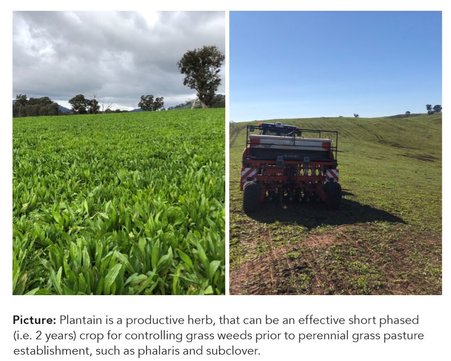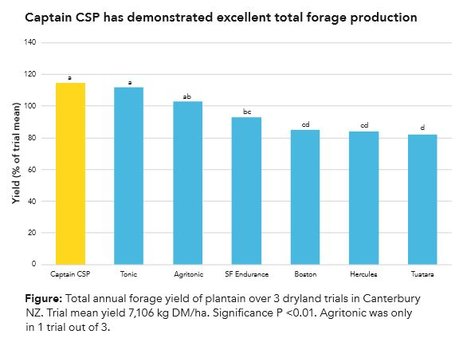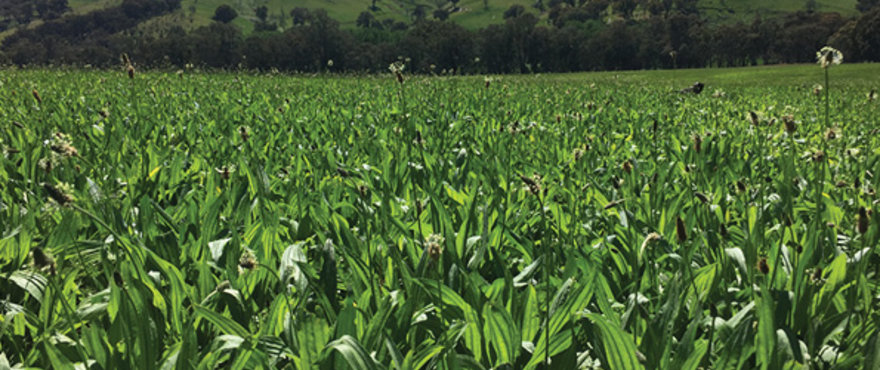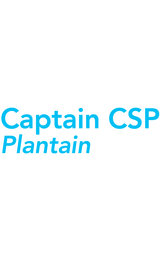Download a copy of the Captain CPS Plaintain factsheet.
Captain CSP (‘cool season plantain’) is a winter active plantain (Plantago lanceolata) demonstrating improved cool season growth over other plantain cultivars. Captain CSP is the first plantain cultivar to come through the Barenbrug breeding program and was selected from Tonic, demonstrating leading forage yield and cool season growth with an upright growth habit and narrower leaf.
Key features
- Upright, narrow-leaf plantain
- Improved cool season activity over other plantain cultivars
- Leading total forage production
- High forage quality and mineral content
- Fibrous root system which aids in reducing N leaching
Key benefits
- The increased cool season production helps fill critical feed gaps for most farming systems, in temperate regions of Southern Australia
- Captain’s leading forage production increases ‘home grown feed’ and carrying capacity and/or reduces the need for expensive supplement use
- High forage quality, such as low neutral detergent fibre (NDF) leads to quick rumen degradation resulting in high drymatter intake (DMI). This increased DMI leads into improved animal performance; liveweight gain or milk production
- The fibrous root system of plantain is shown by research to mitigate N losses in high input systems (i.e. Dairy) and therefore can be used as a mitigation tool for nitrate leaching
Application
Plantain is a widely adaptable species that has application;
• As a high quality herb for finishing systems,
• As a clean-up crop leading into perennial pasture establishment,
• In a mixed sward, where it can be used to increase feed quality and extend seasonal growth curves through the year,
• As a nitrogen mitigation tool in high N systems.
Captain CSP suits rainfall environments of 550mm/yr. + and is a short lived perennial that will persist for 2–4 years depending on the environment, although it can recruit well from seed when allowed. It will typically persist in environments marginal for perennial ryegrass, offering an alternative in this 550–650mm/yr. environments that receive hot dry summers.
The species is also adapted to lighter acidic soils types, that have a low cation exchange capacity and pH (will tolerate pH down to 4.5 CaCl2). Plantain will however perform well in higher rainfall and high nutrient input systems. The growth curve of plantain is like perennial ryegrass, however offers benefits on seasonal fringes; increasing production in early autumn and production and quality in early summer. Captain CSP due to its increased winter production will help fill feed gaps through cooler months offering a better alternative to other plantain cultivars. Like all plantain, Captain will provide excellent feed quality (35–50% NDF, 10–12 ME and > 16% CP) and elevated mineral content (P, S, Ca, Na, Zn, Cu and Co). For more detail on Captain CSP and use of plantain in farming systems, see our Plantain Agronomy Guide.
Agronomy & Management

Plantain can be included in pasture mixes with both grasses and legumes. Rates in grass mixes can vary between 2–8 kg/ha depending on desired composition of plantain. It is recommended that around 2–4 kg/ha is sown when mixing with ryegrass as a N mitigation tool in dairy or other high N input systems. When mixing with legumes be mindful of potential broadleaf weed issues and available control options.
Plantain can be sown in autumn or spring (in reliable areas) providing flexibility.
- Graze young plants lightly, once they resist pulling, usually 8–10 weeks after sowing (depending on sowing time and soil temperature).
- Re-graze based on height. Ideally target pre-grazing height of 10–12cm to maximise quality, however yield can be maximised by grazing at 25cm (however consider higher NDF and decreased palatability)
- Maintain critical ground covers and rotation length (c. >30 days in hot summer regions).
- Maintain critical soil nutrient concentrations for production and persistence.

Performance



Disclaimer: The information presented in this brochure is from official and other sources and is considered to be reliable. It is provided in good faith and every care has been taken to ensure its accuracy. Barenbrug does not accept any responsibility for the consequences that may arise from the acceptance of recommendations or the suggestions made.



